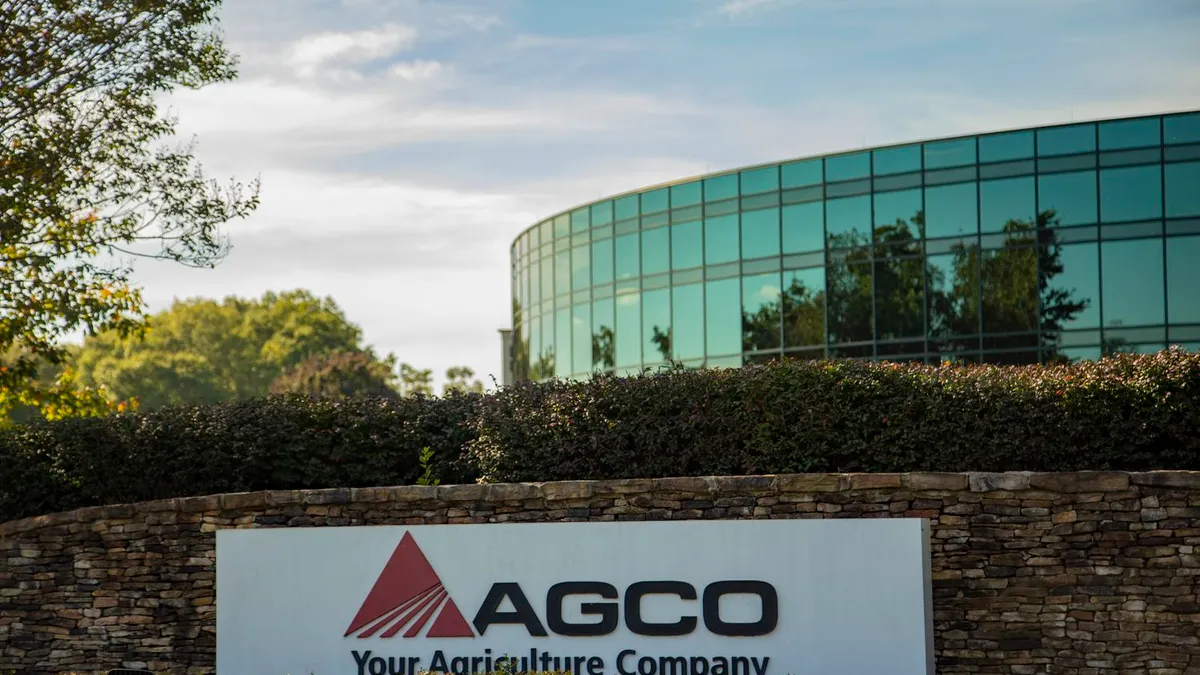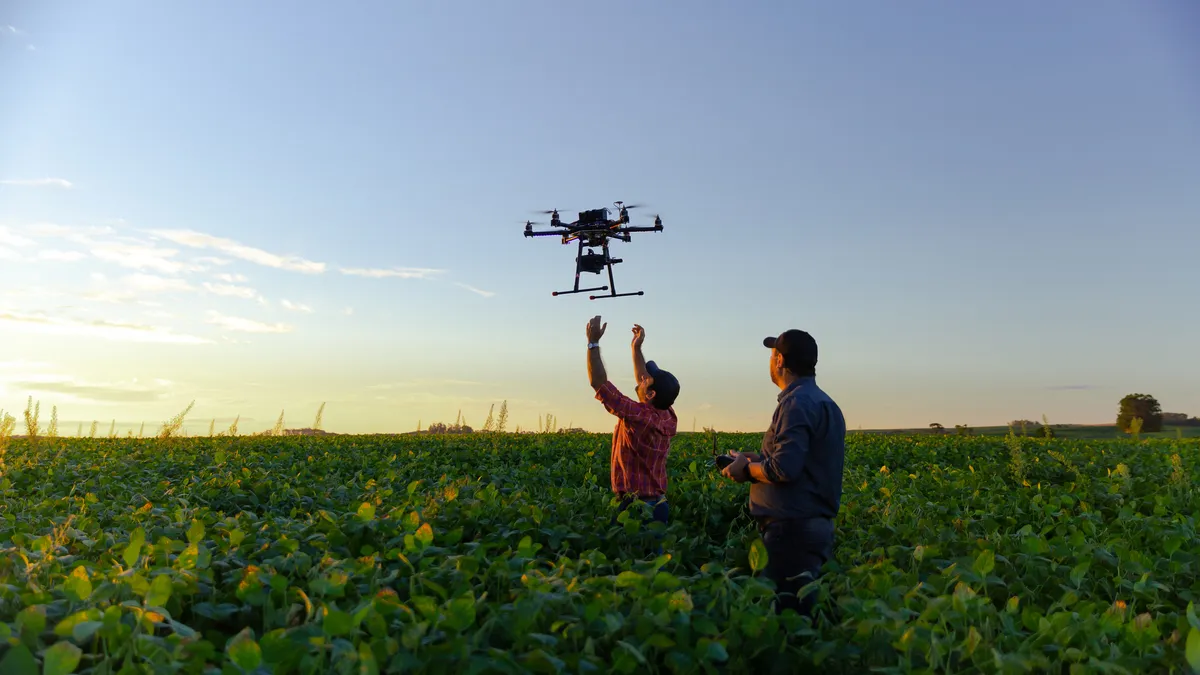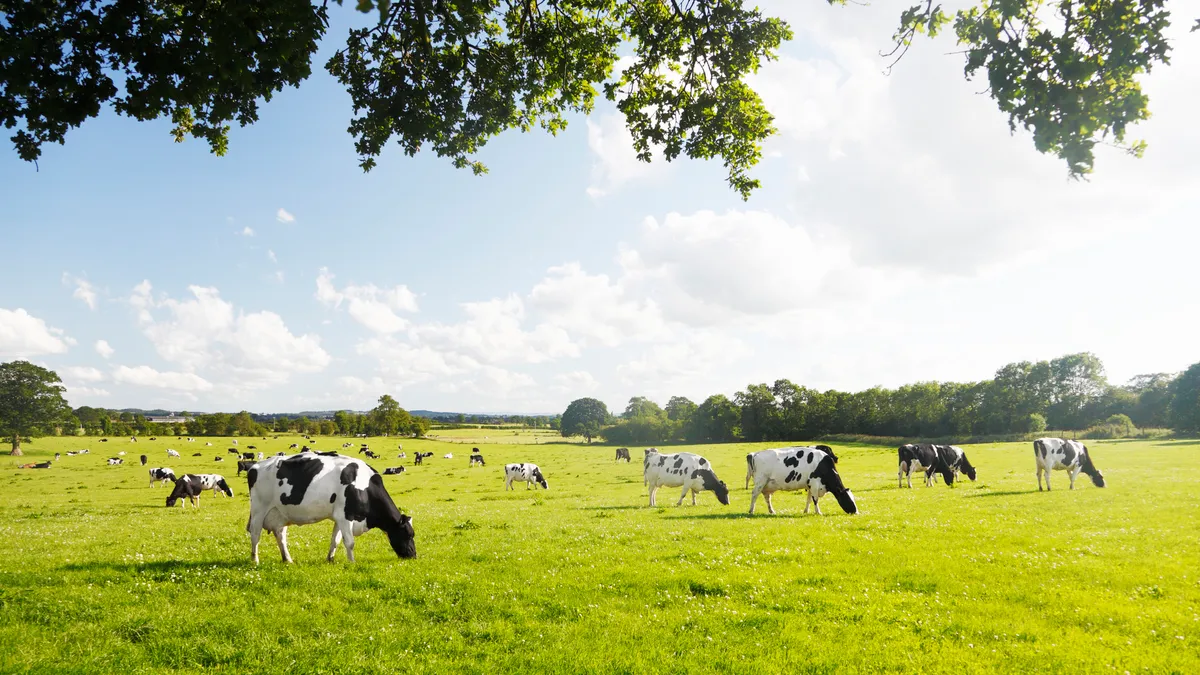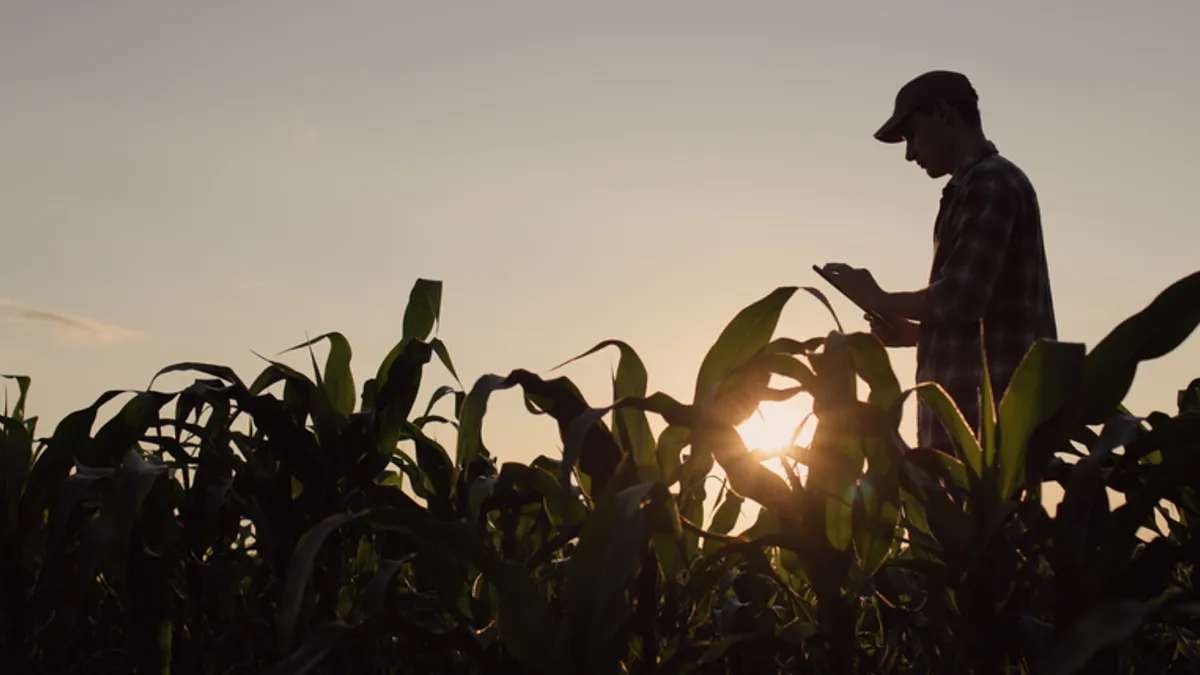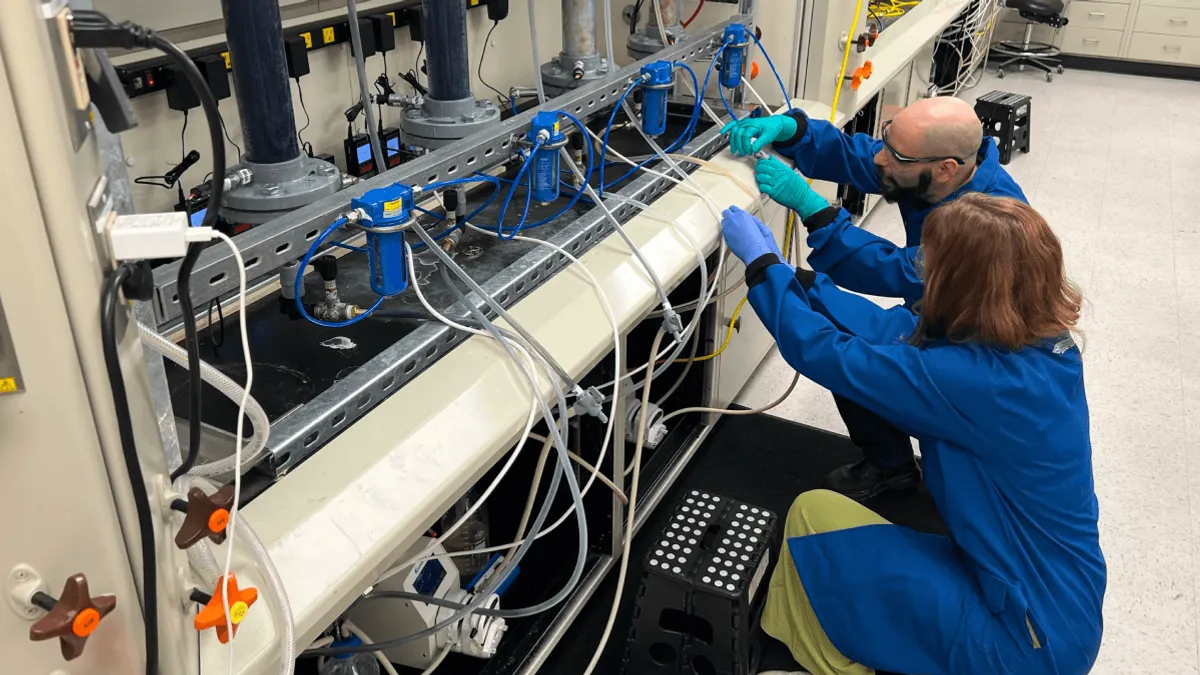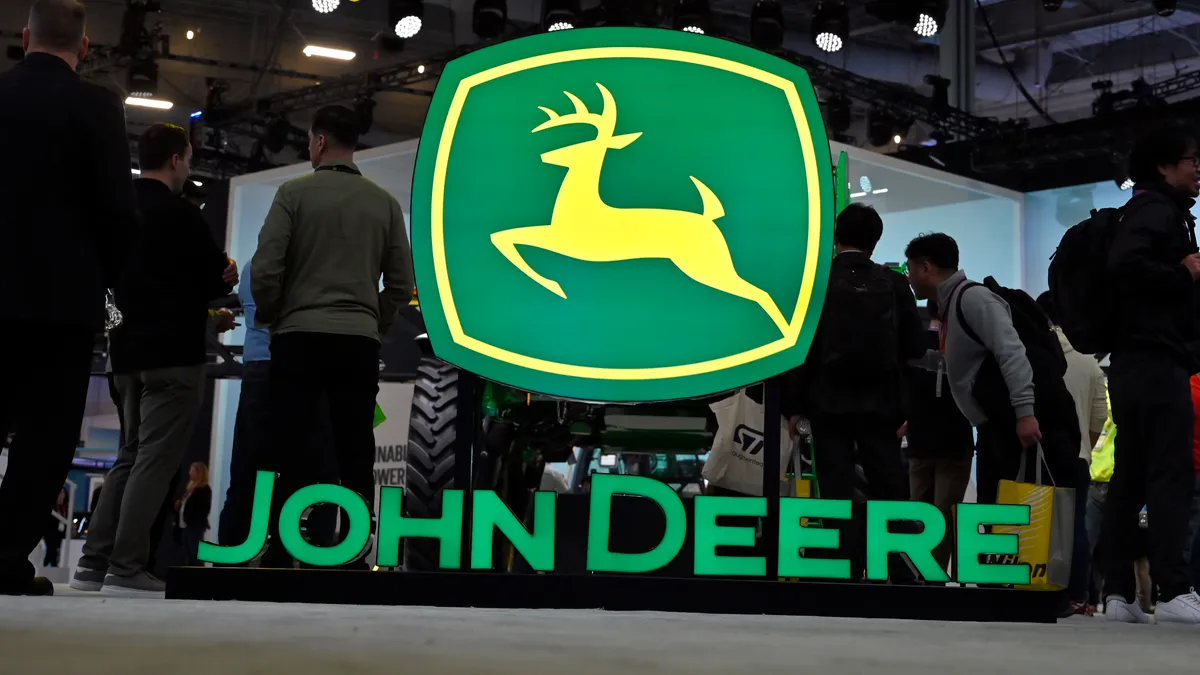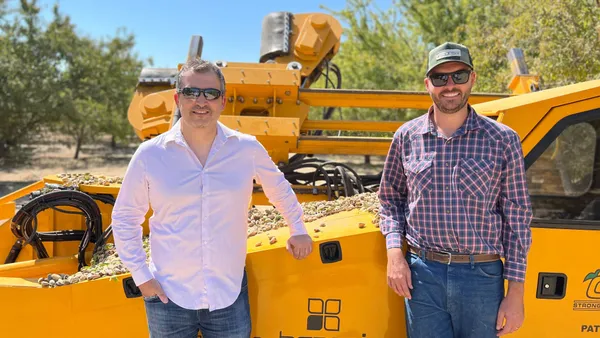Editor’s note: This story is part of a series on trends impacting the agriculture industry in 2024. Read the previous story in the series here.
Agriculture equipment manufacturers expect a drop in demand for farm equipment in 2024. Digital solutions, though, could be a growing sector in the coming year.
In earnings calls from late 2023, Deere, Agco and CNH Industrial estimated sluggish sales for farm equipment in North America, especially for smaller machinery. Agco expects demand to be 2% to 3% lower than "healthy levels in 2022," while Deere is bracing for a sales decline between 10% and 15%.
“We think 2024 will be a tougher ag market environment than in 2023, and our competitors have made similar comments,” CNH CEO Scott Wine said in an interview. “One of our larger competitors suggested industry sales would be down around 10%, and that is consistent with our view.”
Equipment makers' assessments echo a survey by the Farm Equipment Manufacturers Association published in October 2023 that found nearly half of equipment dealers are preparing for declines in new equipment sales in 2024.
“We’re coming off 2023 where demand went through the roof for all manufacturers,” said Marc Ivey, second vice president of the Farm Equipment Manufacturers Association. “That level of demand is now coming back to pre-COVID levels, since we have to realize we can’t have a strong market forever.”
As manufacturers grapple with the realities of lower sales, some are finding a more profitable path by focusing on their innovative technologies to make up for the projected negative outlook of their physical assets.
Farmers put off purchasing new equipment
Supply chain issues during the pandemic’s peak have faded, and manufacturers are now brimming with equipment to sell.
“The lots are full…but in the economic times we are in now, the cost of money for commercial farmers is higher than it has been in the last 20 years and we’re seeing farmers repair existing equipment on their farmers [as opposed to buying new products].”
According to the FEMA survey, 31% of respondents said they could see the used-equipment market grow up to 7% in 2024.
After enjoying a banner year in 2022, when sales increased 22% over a year earlier, CNH is preparing for a slowdown in the coming months. The equipment maker is accustomed to scaling back production levels when the market asks for it. It lowered production of low horsepower tractors by 20% in 2023 as demand declined in Brazil.
"As the market in Brazil has been slower than anticipated, we have reduced our workforce and production accordingly,” Wine said.
High production costs for farmers are expected to continue in 2024, and low commodity prices will likely further pinch the sector. A USDA outlook noted producing wheat will cost 30% more than in 2020, while cotton, rice and corn input costs will be 26% higher.
From hardware to software
With farmers shying away from purchasing new equipment, manufacturers are focusing their attention on building up their tech offerings, which can be added to existing machines.
As farmers look to cut costs, more are leaning on technology to boost efficiency and production. Precision spraying and automated crop spraying are among the technologies touted by manufacturers as key sectors in their portfolio, as well as artificial intelligence to help farmers recognize patterns affecting the performance of crop varieties and production on their specific plots.
“Farmers want to optimize yield potential and those technologies help them do that so it makes sense to maximize those inputs that could add to their bottom line,” Ivey said.
A 2023 Deloitte report is optimistic that more digital technologies will find favor with farmers, suggesting agtech revenue will hit $18 billion globally in 2024. CNH is already seeing more demand for its tech products, and is doubling down on innovation with new innovations on the horizon.
“This year, the energy and momentum of our investments in tech innovation will be especially visible, with significant advancements in our continued journey toward autonomy and automation,” Wine said.
Still, some farmers view digital adoption as a risky proposition, citing high costs and unclear return on investment as their main challenges to adopting farm-management systems. But environmental policies and profitability strain could encourage farmers to clamor for agtech solutions.
“Agribusinesses are facing more pressure to decarbonize their operations as regulations tighten," the Deloitte report concluded. "And as farmers are dealing with margin pressures and high costs of resources, AgTech has become important to help accelerate the shift toward data-driven decision-making.”








